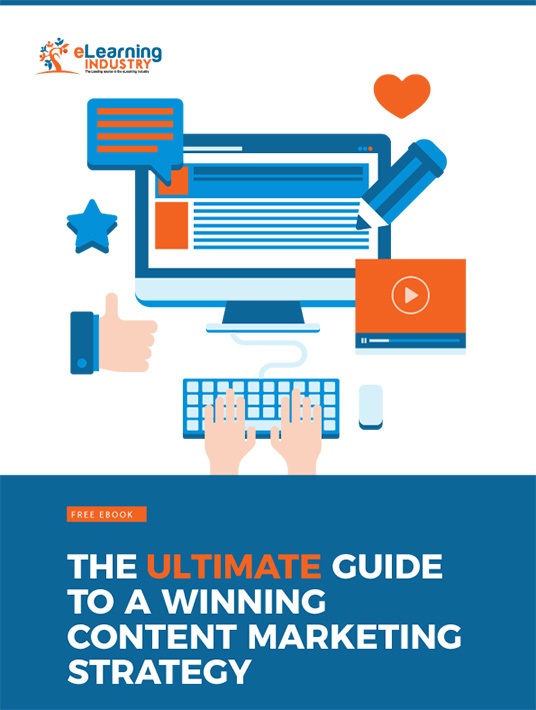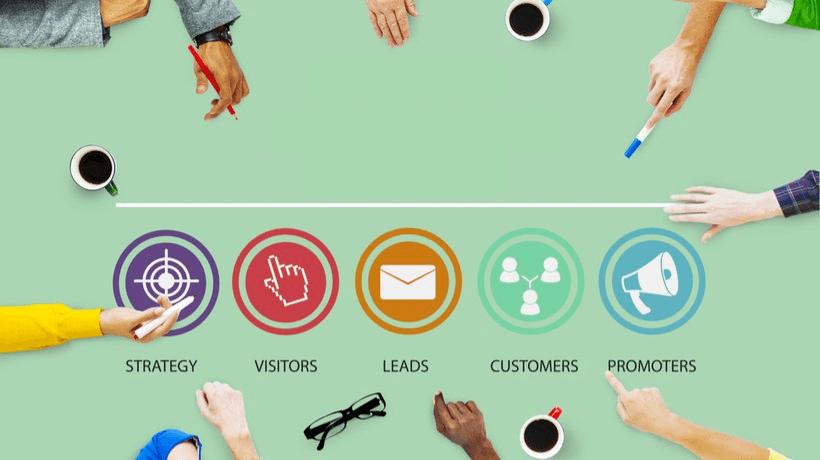Is Inbound Marketing The Best Approach For eLearning Organizations?
When creating a content marketing strategy, there are several ways to get your customers’ attention. You can have slashing prices to draw in buyers who had no plans to purchase. You can use loyalty programs to keep your customers coming back for more. You can advertise on TV, radio, magazines, and other avenues. Or... you can simply talk to your customers. Get to know them. Share your experience. Let them know what's worked for you in the past, so that they can do the same to overcome their everyday challenges. This approach is sometimes called inbound sales strategy, also known as content marketing.

1. What It Is
Suppose you were looking for a new hobby. You would start by asking your friends about their personal interests. They may recommend adventure sports. Would you run to a sporting goods store and invest a lot of money into kayaks and parachutes? Probably not. You’re more likely to ask people what it’s like, watch some YouTube videos. Maybe even join a group. That’s what inbound marketing is. It’s information about a particular subject that appeals to prospects. These prospects are already interested in the topic and simply want to learn more about the benefits of ideas involved. As a marketer, you consciously and deliberately answer questions before your client asks them. This establishes you as an expert in the field. Finally, they ask the question you truly care about, and that is what to buy and where. By now, you’re already their go-to person for useful tips and tricks. Inbound marketing is all about creating trust through free information, with the aim of eventually selling products or services. It’s a way to help your potential customers, so that they recognize your intrinsic value.
2. What It Isn’t
If you think of inbound marketing in the terms mentioned above, it might be misconstrued as something dishonest. That’s not true at all. You’re offering your client base a virtual, subconscious window-shopping experience. You’re giving them information that they want. You’re not going to sell them anything until and unless they’re ready to buy it. Going back to the adventure sports example. If skydiving or kayaking didn’t appeal to you, then you wouldn’t have followed it up.
Inbound marketing isn’t advertising, per se. It doesn’t convince you to buy anything you don’t want, or manipulate you into breaking the bank on a product that you don’t necessarily need. It simply taps into your innate curiosity or focuses on a particular need you may have. If the customer does want to make the purchase, inbound marketing content directs them to a site where they can hit the buy button. Despite its name, inbound marketing doesn’t hunt you down and try to sell you stuff. It hangs around and helps you find it, but only if you're already on the brink of sealing the deal.
3. Why It Works
Traditional marketing is like a door-to-door salesman that you’ve learned to slam the door on. It’s the telemarketer you get rid of by giving the phone to your three-year-old. Conversely, inbound marketing is the stranger at the mall who has great hair. It’s the guy in your office that has a powerful car. They can tell you whether their hair is strawberry blonde or ice mocha brown. They can share the specs and fuel efficiency of their vehicle. If you really want to know, they’ll tell you the name of their mechanic or hairdresser. If you ask the right questions, they might even get you a discount! This is why inbound marketing works. It offers useful information with no obligation. It doesn’t tell you what you should buy. Instead, it demonstrates your options. And when you’re ready to buy, it offers you the best possible deal. Furthermore, it explores potential benefits that you may not have even considered, such as common problems that it can help you alleviate in order to achieve your goals.
4. Why You Should Do It
Many companies are wary of content marketing. They feel that it has no direct results or measurable returns. And they think it takes too long. After all, a customer might ingest your free material for a long period of time before buying. However, this prolonged interaction is a good thing. The more customers interact with your brand, the more they trust you and see your value. Then, eventually, they’ll feel comfortable with your recommendations and gladly buy your product or service. And they’ll tell others to buy from you too. Another benefit is that unlike advertising, inbound marketing has no time limit. You create your content once and clients can access it forever. That means lower overheads and more opportunities to share your skills and products. It’s a win-win situation.
5. What’s The Next Step?
Athletes are a fascinating breed. They train for multiple hours every day, and sometimes for years before they have a big event like the Olympics. However, sportspeople like swimmers and sprinters have less than a minute to make their training pay off. Marathoners and triathletes, on the other hand, have hours to make it count. Your approach to marketing should be the latter. You must strategize every move, create a long-term plan of action, and offer real value to readers in small doses. Don't try to sell them your services right away. Instead, build rapport, so that they are more likely to buy your product and recommend it to all their colleagues further down the line. That said, you should take every opportunity to incorporate links and calls to action into your content. After all, clients need to be able to reach out to you when they are ready to invest.
So, is inbound marketing a good idea for your eLearning organization? Definitely, because it speaks directly to your customers and shows them why they need you. It demonstrates to clients that you are useful, and this always drives sales. It fulfills a client’s need before they’re aware of it. Everyone loves a resource like that. If you do one thing today, sit with your team and develop a good inbound marketing strategy.
Are you interested in exploring the basics and benefits of content marketing? Download our free eBook The Ultimate Guide To A Winning Content Marketing Strategy to get more tips and tricks on how to generate leads, drive traffic to your site, boost conversion rates and use the SEO/SEM and Google Revenue Model to your advantage.

